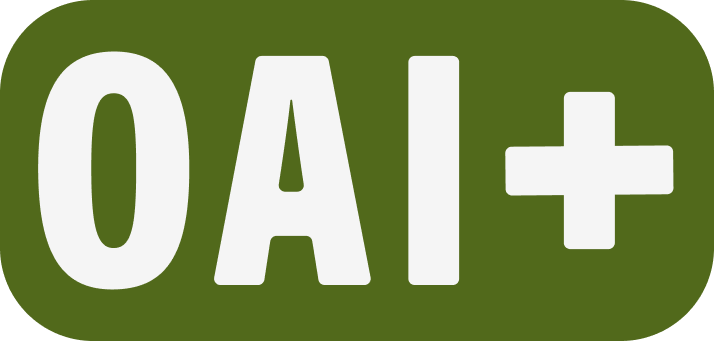
An effective syllabus is both relevant and accessible for all students. Along with complete information, it needs organization and formatting that works well in assistive devices.
To help you get started, OAI has an accessible syllabus template with PSU policies and other common elements. It’s organized with Microsoft Word’s heading structure and uses accessible formatting. Keep the structure and formatting to maintain accessibility, but add and delete information to make it relevant for your course.
Note these elements:
- Headings: Use text formatted as a heading to identify sections of your syllabus.
- Lists: Use the list tool (bullets or numbering), not dashes, to identify lists of items.
- Links: Make them meaningful. For example, instead of click here, use a more descriptive link: OAI+ Tech Tutorials.
- Tables: Use column and row headers on every table.
- Images: Add alternative text that describes the image for visually-impaired students.
- Font: Make sure the text color you use has enough color contrast to be legible. Also, don’t use color or underlining to convey information or meaning.
- Layout: Use adequate line spacing (1.15 or greater) and a large enough font size. (Nine points is the minimum, but 12 to 14 is better.)
It’s also important for a syllabus to be culturally inclusive to all our students. The PSU Library has a guide to making your syllabus — and your whole curriculum — more culturally responsive and inclusive:
Important notes for building your syllabus:
- Talk with your department or college about any additional syllabus requirements.
- Be sure to check dates and links before use.
- Post the syllabus in the content area of your online course so students always know where to find it.
Beyond the basic syllabus
PSU instructors have diverse perspectives about the use of generative AI in the classroom. As such, instructors must clearly communicate to students how and when generative AI tools can be used within a course in general and/or for any individual class activity or assessment. In addition to other forms of communication, the class syllabus serves as a formal agreement between instructor and student, which makes it an ideal place to document these expectations. Below, you will find three general student usage categories for generative AI tools and an example syllabus statement for each. This is not an exhaustive list, but we hope it will help you begin creating statements of your own. You can also explore other examples in the curated list Generative AI syllabus statements v.3 – OAI+. Feel free to adopt the language below or adapt it to fit your needs.
Note: When possible, we recommend using the phrase “generative AI” or “generative artificial intelligence” in your syllabus rather than calling out a specific tool (e.g. “ChatGPT”). If you choose to include some version of an example below that permits student use of Generative AI tools, also consider adding the Library’s suggested citation formats when using generative AI tools in academic work.
Generative AI tools are generally allowed with attribution
In this course, those students who wish to utilize Generative AI tools, such as ChatGPT, are encouraged to do so. AI tools may be employed to brainstorm assignments or projects or to refine pre-existing work. However, to uphold scholarly standards, students are required to cite any AI-generated material that contributes to their work, including in-text citations, quotations, and references. The generation of content through AI without appropriate attribution constitutes academic misconduct.
Some use of generative AI permitted under specific circumstances of with explicit permission
Throughout this course, we may employ Generative AI tools like ChatGPT. Clear guidelines will be provided regarding when, where, and how these tools may be utilized along with instructions for proper attribution. Any usage outside of these specified permissions constitutes a violation of PSU’s Academic Integrity Guidelines.
No use of generative AI is permitted
Intellectual integrity forms the bedrock of academic communities and serves as the cornerstone for impartial evaluation of your work. All coursework completed and/or submitted for this course must represent your original work and adhere to the University’s Academic Integrity Guidelines. Unauthorized collaboration or the use of ChatGPT or any other generative AI applications is strictly prohibited.
Particularly in online courses, it might be helpful to also create a video screencast introducing the course syllabus. Consider, for example, this Syllabus Builder Video from UDL on Campus.
Consider adding a statement to your syllabus that invites students to share their access needs throughout the term. An example:
I encourage you to name your access needs in this class and ask that you please communicate as your needs change. Naming your access needs can be asking a presenter to speak slower, or turning your camera off for a moment and letting the class know that you will participate via chat, or keeping your camera on but letting the class know that you may fidget, stretch, or move during class time. Naming your access needs is an important part of how you communicate with the class.
A negotiated syllabus is constructed collaboratively with students, giving them choices about what, how, when, and with whom they will meet learning objectives.
One way to build a negotiated syllabus is to start with what’s required for students to pass the course. Outline those requirements, then allow the class to determine some aspects democratically — such as readings, grade scheme, class activities, major assignments, etc.
Students are often much more invested in classes where they are making decisions and building the class with the instructor and their peers.
More resources for building a syllabus:
You might also like
👋Need more help?
Submit a support request through our Faculty Support portal for assistance.


